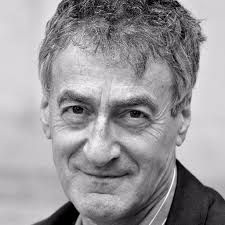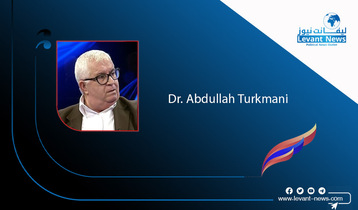-
Little Amal – a big symbol of hope for young refugees, and not just from Syria

Amal’s 8,000 kilometre journey is designed to represent the stories of millions of young refugees who are forced to leave their homes and often travel alone without their parents. She comes from Aleppo and is looking for her mum, who went off to find food and never returned.
In total, around 6.8 million Syrians are now refugees or asylum seekers and another 6.7 million people have been forced to leave their homes since the Arab Spring protests began a decade ago, and now live in poor conditions within Syria. Together that's more than half of the country's population. About half of the people affected by the crisis are children.
And given last month’s takeover of Afghanistan by the Taliban in the wake of the bungled US withdrawal, focusing on the principal human victims – especially the youngest – makes perfect sense.
The Walk project was meant to have taken place between April and July but was delayed by the Covid pandemic. The journey of Little Amal, from Gaziantep, near the Turkish-Syrian border, has been taking place since late July. It aims to draw attention to the refugee experience by following a route similar to that taken by Syrians who escaped their bloody civil war. It combines art, music and faith.
The 3.5 metre giant (11 foot) - twice as high as an average person - was designed by Handspring, the South African-based creator of the War Horse puppets. It is being operated by three teams of four puppeteers: one for each arm, one for her back, and one inside her body, walking on stilts and also operating a contraption called "the harp," a complex system of strings that control the puppet's facial expressions.
Little Amal’s body is made from moulded cane and her head, arms and legs made from carbon fibre. “She can convey shock, shyness and curiosity through the lowering of her eyes and the graceful undulation of her arms,” wrote one journalist who encountered her.
About 250 partner organisations and artists are involved in the project, with more than 80 free events taking place in countries along the way. Over 70 towns, villages and cities will welcome Little Amal with art, from major street parties and city performances to more intimate community events.
In Gazientep, excited children held up lanterns to guide Amal through the city. And on the Greek island of Chios, choirs sang to welcome her as an orchestra played. Elsewhere in Greece Little Amal encountered hostility – from Christian communities hostile to Muslims.
In Naples she was tired, had had enough and will have a tantrum which, Vesuvius-like, releases energy, which brought hundreds of dancers and musicians to join her. Little Amal visited the Vatican City and was even received by Pope Francis.
"Amal is big and beautiful, and meeting her is a pleasure," said Cardinal Michael Czerny, who also met her. "But she immediately reminds us that meeting vulnerable migrants, insecure workers and asylum seekers in our midst requires more than just a glance.”
In Cologne, Amal was scheduled to share apple pie with elderly people and hear their stories of growing up after the second world war. In Marseille she will join hundreds of dancers in life jackets in a commemoration of all the refugees who have died at sea.
In Paris, a refugee camp installation will be created outside the Insitut du Monde Arabe close to the Seine, and Amal will explore the tents – with shadow art and sound installations – for signs of home.
In late October, Amal is due to arrive in the English port of Folkestone. She will celebrate her 10th birthday in London with a dawn chorus performance at the Royal Opera House and a party at the iconic Victoria and Albert Museum, to which children will be invited. She will then make her way through Oxford, Sheffield, Coventry and Birmingham before ending her journey in Manchester where, it turns out, her mother has settled.
Amir Nizar Zuabi, a Palestinian playwright , and this impressive project’s artistic director, has commented that the purpose of The Walk was to highlight refugees’ potential, not only their dire plight. “The attention of the world is elsewhere right now, which makes it more important than ever to reignite the conversation about the refugee crisis and to change the narrative around it,” he has said. “Yes, refugees need food and blankets, but they also need dignity and a voice.”
The Walk project is a major contribution to belief in the humanity of ordinary people faced with a global humanitarian crisis. Every one of them, with their baggage of suffering and dreams, needs and talents is waiting for a generous response from others. It really matters for the simple but inevitable reason that refugee children are not going to disappear any time soon.
by: IAN BLACK

You May Also Like
Popular Posts
Caricature
BENEFIT Sponsors BuildHer...
- April 23, 2025
BENEFIT, the Kingdom’s innovator and leading company in Fintech and electronic financial transactions service, has sponsored the BuildHer CityHack 2025 Hackathon, a two-day event spearheaded by the College of Engineering and Technology at the Royal University for Women (RUW).
Aimed at secondary school students, the event brought together a distinguished group of academic professionals and technology experts to mentor and inspire young participants.
More than 100 high school students from across the Kingdom of Bahrain took part in the hackathon, which featured an intensive programme of training workshops and hands-on sessions. These activities were tailored to enhance participants’ critical thinking, collaborative problem-solving, and team-building capabilities, while also encouraging the development of practical and sustainable solutions to contemporary challenges using modern technological tools.
BENEFIT’s Chief Executive Mr. Abdulwahed AlJanahi, commented: “Our support for this educational hackathon reflects our long-term strategic vision to nurture the talents of emerging national youth and empower the next generation of accomplished female leaders in technology. By fostering creativity and innovation, we aim to contribute meaningfully to Bahrain’s comprehensive development goals and align with the aspirations outlined in the Kingdom’s Vision 2030—an ambition in which BENEFIT plays a central role.”
Professor Riyadh Yousif Hamzah, President of the Royal University for Women, commented: “This initiative reflects our commitment to advancing women in STEM fields. We're cultivating a generation of creative, solution-driven female leaders who will drive national development. Our partnership with BENEFIT exemplifies the powerful synergy between academia and private sector in supporting educational innovation.”
Hanan Abdulla Hasan, Senior Manager, PR & Communication at BENEFIT, said: “We are honoured to collaborate with RUW in supporting this remarkable technology-focused event. It highlights our commitment to social responsibility, and our ongoing efforts to enhance the digital and innovation capabilities of young Bahraini women and foster their ability to harness technological tools in the service of a smarter, more sustainable future.”
For his part, Dr. Humam ElAgha, Acting Dean of the College of Engineering and Technology at the University, said: “BuildHer CityHack 2025 embodies our hands-on approach to education. By tackling real-world problems through creative thinking and sustainable solutions, we're preparing women to thrive in the knowledge economy – a cornerstone of the University's vision.”
opinion
Report
ads
Newsletter
Subscribe to our mailing list to get the new updates!




















